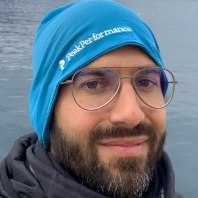Ecology and Molecular Diversity of Marine Fungi
A special issue of Journal of Fungi (ISSN 2309-608X). This special issue belongs to the section "Fungal Evolution, Biodiversity and Systematics".
Deadline for manuscript submissions: closed (15 November 2023) | Viewed by 1638
Special Issue Editor
Interests: marine microbial ecology; biological oceanography; fungal oceanography; marine biogeochemistry
Special Issues, Collections and Topics in MDPI journals
Special Issue Information
Dear Colleagues,
Marine microbes play a central role in the regulation of energy and matter in the ocean. However, our knowledge of the role and ecology of different microbial groups is not balanced, and for instance, most of the research has focused on bacteria, archaea and phytoplankton, while fungal oceanography is still in its infancy. This is mainly due to the wide assumption that fungi are either non-present, inactive and/or outcompeted by prokaryotes when living in a resource-limited liquid environment like the ocean. However, recent studies are revealing a different picture, where marine fungi are widespread in the oceans and actively contributing to the elemental cycles via a diverse repertoire of enzymes. More information is required to unravel the ecological role of fungi in the marine environment. The aim of this Special Issue is to focus on the ecology and molecular diversity of marine fungi. Topics include, but are not limited to, fungal abundance, distribution, activity, phylogenetic and/or functional diversity in coastal to open ocean environments, including seawater column and sediments, derived both from laboratory and field studies. Manuscripts summarizing recent advances in the topic or introducing novel experimental approaches are also welcome.
Dr. Federico Baltar
Guest Editor
Manuscript Submission Information
Manuscripts should be submitted online at www.mdpi.com by registering and logging in to this website. Once you are registered, click here to go to the submission form. Manuscripts can be submitted until the deadline. All submissions that pass pre-check are peer-reviewed. Accepted papers will be published continuously in the journal (as soon as accepted) and will be listed together on the special issue website. Research articles, review articles as well as short communications are invited. For planned papers, a title and short abstract (about 100 words) can be sent to the Editorial Office for announcement on this website.
Submitted manuscripts should not have been published previously, nor be under consideration for publication elsewhere (except conference proceedings papers). All manuscripts are thoroughly refereed through a single-blind peer-review process. A guide for authors and other relevant information for submission of manuscripts is available on the Instructions for Authors page. Journal of Fungi is an international peer-reviewed open access monthly journal published by MDPI.
Please visit the Instructions for Authors page before submitting a manuscript. The Article Processing Charge (APC) for publication in this open access journal is 2600 CHF (Swiss Francs). Submitted papers should be well formatted and use good English. Authors may use MDPI's English editing service prior to publication or during author revisions.
Keywords
- marine fungi
- coastal waters
- open ocean water column
- marine sediment
- fungal abundance
- fungal physiology
- fungal activity
- fungal genetics
- fungal phylogenetic diversity
- fungal functional diversity






